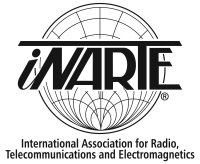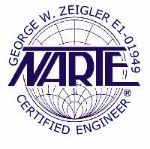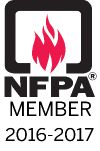Information Technology Equipment (ITE) Maintenance Awareness (Part 1)
We have broken now Information Technology Equipment (ITE) Maintenance Awareness into 3 parts. However, all parts care required for any good ITE maintenance program.
When personnel safety, power quality, surge protection, and lightning protection is unaddressed prior to installation of ITE equipment, there is little hope for success no matter what ITE equipment maintenance plan chosen.
The main causes for ITE equipment failures are:
- Power
- Heat
- Dust
- Physical Damage
- Liquids
It is common knowledge that the deterioration of ITE equipment is normal and that this process starts as soon as the equipment is in operation. When damage to ITE equipment is not monitored, it may result in electrical breakdowns. Load or circuit changes made without coordination of total system design may lead to insufficient size of circuit trip devices or surge protection devices.
Maintenance plan plans should be a primary consideration when constructing an ITE facility, adding or purchasing more modern ITE equipment. Conditions would be ideal for one or more of the maintenance personnel to inspect the normally inaccessible portions of the ITE equipment. They may ask questions of the installing contractor or the manufacturer’s representative. This allows them to learn as much as possible about the maintenance requirements for the new ITE equipment that will be under their jurisdiction.
The selection of a maintenance plan must be consistent with management's ultimate objectives. Maintenance is like an insurance policy: it has no direct repayment, but it is a cost that adds to the cost of the final product. However, we must quickly state that this has intrinsic value. It is generally observed that management resists investing in a maintenance plan even when it realizes the need for proper maintenance. In this context, it is the responsibility of ITE personnel to demonstrate to management how a well-planned electrical maintenance and test program is justifiable.
As part of a preventative maintenance plan, potential hazards that may lead to equipment failure or electrical service interruption can be identified and addressed. In addition, the maintenance plan will minimize the life cycle hazards of ITE equipment that result from failure of ITE equipment when it is not properly maintained.
The purpose of any maintenance plan is to reduce the number of ITE equipment outages. Every organization needs to decide on the most cost-effective maintenance plan for their ITE equipment. This choice depends on the risk and return factor of the ITE equipment functions. The ITE equipment required to be online 24 X 7 naturally would choose a preventative/proactive maintenance plan to ensure that it can meet the online 24 X7 goal.
There are only three options for maintaining ITE equipment. The choices are preventative/proactive, routine, and reactive/breakdown maintenance.
Organizations that have ITE equipment understand that breakdown/reactive maintenance is not maintenance at all. When ITE equipment fails under breakdown/reactive maintenance plan, restore options are reboot, repair or replace the ITE equipment. Depending on the risk return factor of the ITE equipment reactive/breakdown maintenance can either be the least costly or most costive maintenance method. Breakdown/reactive maintenance guarantees an outage will occur at dome point. Approximately 60% of organizations use the reactive maintenance plan.
Organizations that have a routine maintenance plan use the equipment manufacturer's recommended maintenance procedures. The routine maintenance plan is the choice of many organizations. This is the second least costly maintenance plan and can be effective in many cases.
The preventative and proactive maintenance plan goes further than the routine maintenance plan. It performs actions, such as replacing potentially end-of-life components, that prevent system failures that would cause undesirable failures in the ITE system. The primary objective of a preventive/proactive maintenance plan is to reduce the number of preventable ITE equipment outages. A well planned and effective preventive/proactive maintenance plan is costly and requires skilled labor, record keeping and a spare parts inventory. However, the cost of downtime can amount to ten or more times the actual cost of repair, and may compromise security and the possibility of cascading into related systems. Therefore, maintenance must be scheduled for operation on any ITE equipment system that contains data that is difficult to replace or sensitive.
In preparing preventive/proactive maintenance schedules, it is recognized that too frequent inspections are a waste of money and that inadequate inspections compromise critical equipment. The frequency of inspections should depend on the equipment's contribution to cost-effective services, its service cycle, age, overhead, and other relevant factors. A good preventative/proactive maintenance plan includes scheduling out-of-service equipment for routine overhauls during periods of less frequent use, rather than risking a breakdown at an inappropriate time. Therefore, maintenance may be performed at a time that is appropriate for the production or operation schedule of the ITE equipment.
All ITE equipment shall be classified based on its role in the operational process. Machinery and ITE control equipment that could stop operations in the event of a breakdown should be classified as critical ITE equipment. This ITE equipment should be provided with a very comprehensive preventive/proactive maintenance plan. A simplified routine maintenance plan can be used for other equipment, such as air conditioners, electric fans, drinking water chillers, etc. It would be considered a failure of the nonvital equipment and will have little or no adverse effect on the processing of the ITE equipment or safety. The decision to maintain the nonvital and vital equipment must be taken with as much consideration as the selection of the ITE equipment itself. The cost of maintenance plans should be regarded as part of the unit cost of operation or production. The essentials of an effective preventive/proactive maintenance plan include record taking, interpretation of data, acquisition of adequate replacement parts, skilled labor to carry out the program, and cooperative management.
The ITE systems interface with other systems another, such as main electrical power; emergency power; dedicated “clean” power; utility power; fire and security systems, hydraulic; pneumatic; heating, ventilation, and air-conditioning (HVAC); and other mechanical systems. It is therefore important to find out how these interfaces work and how they can be coordinated in the maintenance plan. The related systems of a facility should not be neglected. HVAC systems produce a quality working environment for ITE staff, but more importantly, HVAC systems produce controlled conditions that are essential to the reliable operation of ITE equipment. The air conditioning and heating system that keeps temperature and humidity levels in ITE systems can cause ITE equipment to fail if this equipment fails.
A thorough knowledge of the ITE equipment is a precondition for the success of any maintenance plan. This is an extremely valuable asset to rely on if it becomes necessary to correct or repair any operational problems in ITE equipment.
Today, it is not possible for untrained maintenance personnel to keep pace with ongoing changes in advanced ITE equipment. The requirements for servicing and maintaining ITE equipment require a high level of specialized training and expertise. Those who are not willing to update the training requirements required to maintain ITE equipment are faced with the possibility of being phased out with the replacement of obsolete ITE equipment. This is a reality facing anyone who has to maintain and maintain a sophisticated and more complex apparatus.
The main parts of the maintenance plan can be classified according to maintenance management considerations, technical requirements and items that should be included in the electrical maintenance and test program.
Program planning should then include the benefits of well-planned maintenance along with cost data for loss of production, security or mission. Any maintenance plan should prove that it is cost effective and minimizes equipment failure. The planning of the program should include considerations for proper test equipment, tools, and trained personnel to carry out maintenance routines. In addition, record-keeping systems should be considered, which may range from fully computerized systems to manual filing systems. To implement a preventative maintenance and ITE testing program, the following steps may be taken.
- Determine the factors that form the basis of the maintenance plan, such as the need for continuous production, the management policy on budgeting planned maintenance versus replacing ITE equipment.
- Review and consolidate equipment outage and lost production cost data. Analyze cost data to convince management of the benefits of scheduled maintenance.
- Set ITE maintenance priorities. This is an online production sequence that identifies the most important or least important equipment, assesses the reliability of the equipment and other factors.
- Establish the most appropriate maintenance techniques. This involves the choice of the best maintenance method and personnel for the different types of equipment and systems.
- Planning and implementation of the program. Monitor its advantages and costs. Perform periodic analysis of program functions for improvement.
Once the maintenance program is established, it is essential that it consists of five elements that will prove it to be a success: responsibilities, inspection, scheduling, work orders, and record-keeping.
- The responsibilities of the maintenance organization should be clearly defined through functional flowcharts and statements of work for each unit. Functional statements of work should be set by management as a policy issue. All other departments should be notified of the responsibilities assigned to maintenance organizations. The effectiveness of maintenance services will depend on how they are organized and how staff are utilized.
- Inspection is the key to success in a maintenance plan. Sufficient time should be allowed for the inspection to verify the status of the new and installed equipment. The purpose of the inspection is to provide advance notice of the condition of the equipment that is the subject of the investigation. Once the inspection is completed by qualified personnel, imminent deterioration may be detected in advance so that repair or replacement can be completed prior to equipment failure.
- A specific schedule of work is required for maintenance. Service schedules should be based on a minimum down time for the different operating segments. The schedule for inspection, routine maintenance, and other work may vary for different equipment and will depend on many factors. These factors may include the age of the equipment, frequency of service, hours of operation, environmental conditions, damage due to abuse, and safety requirements. The frequency of inspections should be adjusted as data on various equipment is recorded and analyzed to provide a balance between the cost of maintenance and the cost of replacing the equipment.
- Work Orders are work requests which need to be completed. Work orders can be established for all inspection services and other work on equipment in terms of routines. Any of these routines should include information on when such work is to be performed, where it is to be performed, and exactly what is to be done. These routines can be produced using a computerized maintenance system. Routines should include all relevant information with respect to the equipment.
- The success of a planned maintenance plan depends on the impetus given by senior management and the interest of the maintenance personnel in the program. To have an effective program, it is imperative that all equipment inventory maintenance and test data is complete and easily accessible throughout the life of the equipment. In this regard, record keeping is very important. All forms and reports should be organized to provide easy access to data, as required, and to report issues. Such data may also be used over time to analyze trends in equipment degradation. If the data is not saved and retained correctly, the entire purpose of preventive maintenance is lost.
« Back to Blog






Comments